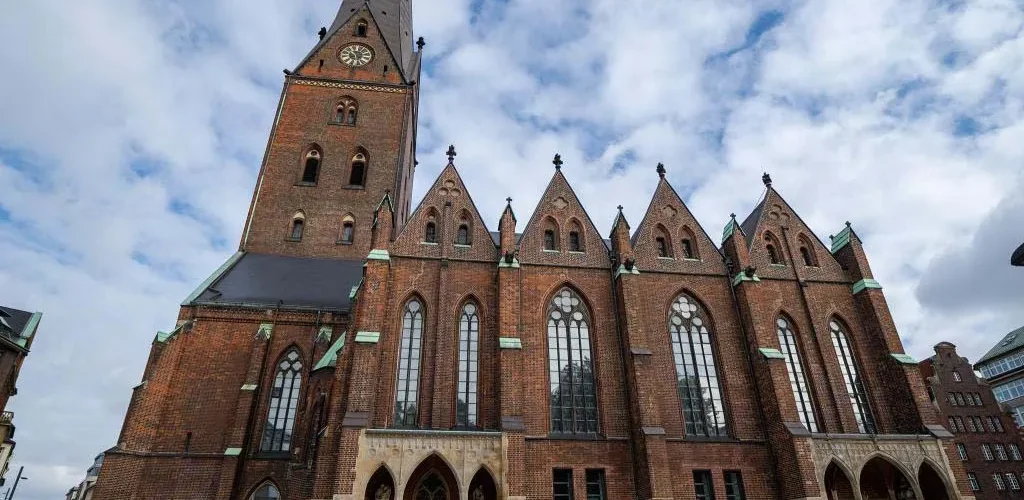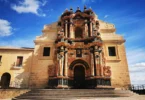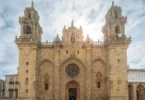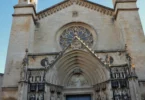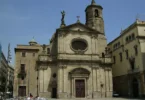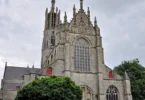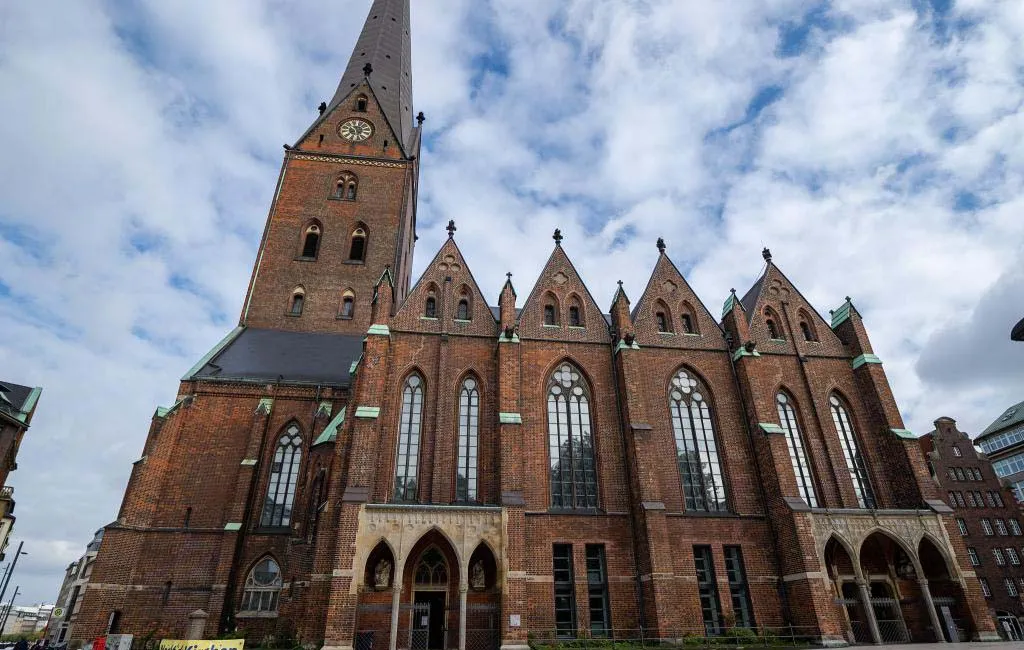
Introduction
In Hamburg, Germany stands on the site of many former cathedrals. It has been a Protestant cathedral since the Reformation and its congregation forms part of the Evangelical Lutheran Church in Northern Germany. The oldest remaining church in Hamburg, St. Peter’s Church has a wild and turbulent history. Technically, it’s been burned down—on purpose and on accident—several times; while some elements are fairly modern, others date back to the 1300s. Regardless, this historic spot is a must-see, both for its treasures and the fact that, from the top of the tower, visitors will nab some of the best views of the city.
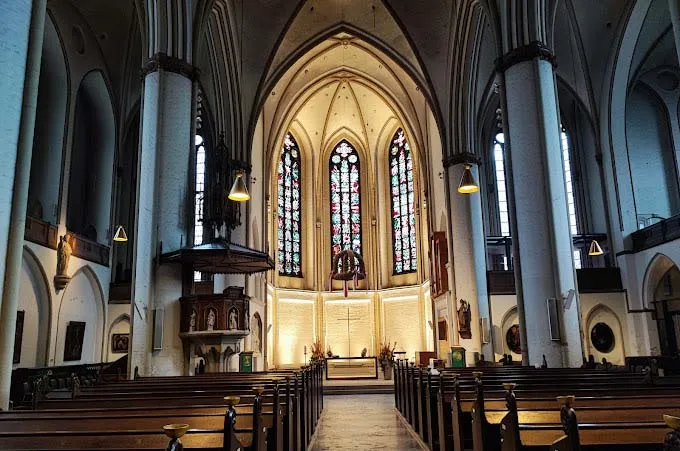
It is believed that the church is near the original Hammaburg area and that a previous church or cathedral existed on the site. St. Peter’s was probably built in early 1189; it was first documented in 1195 as a market church or ecclesia forensis. About 1310 it was rebuilt in a Gothic style and was completed around 1418. The bronze lion-head door handles, the oldest work of art of Hamburg, date from the foundation of the tower in 1342.
The tower, topped with a new copper-covered spire in 1516, at 127.5 m towered above even that of the neighbouring Hamburg Cathedral, but was surpassed itself already in 1518 by the tower of St. Nicholas Church at initially 135 m. Decay and political tensions caused the cathedral to be torn down between 1804 and 1807. Under the subsequent French occupation St. Peter’s along with most of the other main churches in 1813 was commandeered by Napoleonic soldiers to be used as a horse stable. Only a few decades later it fell victim to the great fire that swept Hamburg in May 1842. Most works of art, such as the lion-head door handles, were saved. The St. Peter’s portal gateway was heavily damaged in the fire but was saved and ended up being built into the Museum fur Hamburgische Geschichte and the doorway itself was restored again in 1995.
Only seven years after the great fire, the Gothic church was rebuilt by architects Alexis de Chateauneuf and Hermann Peter Fersenfeldt in its previous location.

A cathedral has existed on this site for centuries. Records indicate that Saint Peter’s was built in the late 12th century before being rebuilt in the Gothic style during the 1300s. The most important Saint Peter’s artifacts are the bronze lion-head door handles, which date to 1342. Saint Peter’s Church was heavily damaged in the Great Fire of 1842. However, many of the artworks, including the lion-head door handles, were saved. After the fire, the church was rebuilt. The 132-meter-tall (433 foot) tower was completed in 1878.
Inside the church, visitors will find many important artworks. A 1460 Gothic mural shows the church’s first bishop, Ansgar of Bremen. A statue created in the late 1400s also depicts Ansgar of Bremen. Two 17th century Gottfried Libalt paintings, Jacob’s Dream and Christ’s Birth are on display in the cathedral.
Another important painting is Christams 1813 in Saint Peter’s. This painting depicts the Hamburg citizens locked in the church for refusing to feed Napolean’s occupying troops. Visitors are welcome to climb the 544 steps to the church’s viewing platform. This is the highest viewing platform in the city, and guests can look out over the city center, Alster Lake, and the port. From the 17th century, there are two oil paintings by Gottfried Libalt: Jacob’s Dream and Christ’s Birth. They were damaged by an acid attack in 1977, but were restored in October, 2001, and returned to the cathedral.
The painting Christmas 1813 in St. Peter’s is on a column in the south part of the cathedral. It shows the Hamburg citizens who, when they did not provide food to Napoleon’s occupying troops, were locked in the church by the soldiers. In the front of the cathedral are neo-Gothic representations of the evangelists. A modern bronze sculpture by Fritz Fleer shows Dietrich Bonhoeffer dressed as a convict with his hands bound.
The building itself was expanded over two hundred years. It is comprised of a large hypostyle prayer hall (hypostyle means, filled with columns), a courtyard with a fountain in the middle, an orange grove, a covered walkway circling the courtyard, and a minaret (a tower used to call the faithful to prayer) that is now encased in a squared, tapered bell tower. The expansive prayer hall seems magnified by its repeated geometry. It is built with recycled ancient Roman columns from which sprout a striking combination of two-tiered, symmetrical arches, formed of stone and red brick.
Feast Day
Main Feast : June 29th (Catholic Church, Eastern Orthodox
Church, Oriental Orthodoxy, Anglicanism, Lutheranism)
January 18th : Confession of Saint Peter (Anglicanism)
February 22nd : Chair of Saint Peter (Catholic Church)
Church Opening Time
Monday, Tuesday : 10 am to 6 pm
Wednesday : 10am to 7 pm
Thursday, Friday : 10am to 6pm
Saturday : 10am to 5pm
Sunday : 9 am to 8 pm
Contact Info
Address
Main Church of St. Petri
At St. Peter’s Church 2 , 20095 Hamburg
Phone : +49 40 3257400
Accommodations
Connectivities
Airway
Hamburg (HAM) Airport to Church of Saint Peter Distance 27 min (12.1 km) via B433
Railway
U-Bahn Station to Church of Saint Peter distance 30.5 km (58 min).

